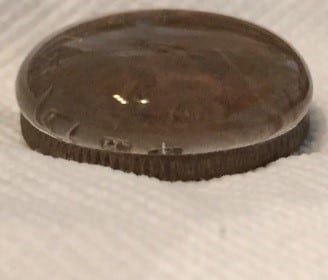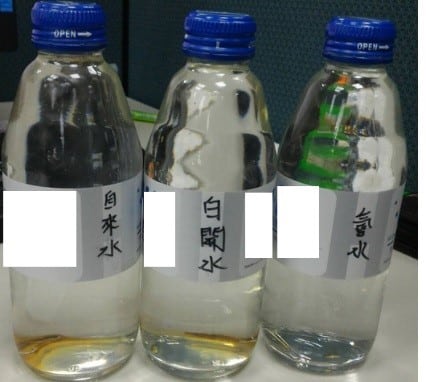低氘氫水實驗室 研究項目
- 極超高純氫氣研究—7N、8N維米製程氫氣
- 固態儲氫器研究、太空船用固態儲氫器研究
- 低氘飽和氫水製程研究及應用研究
- 低氘水用於生物實驗及製藥應用研究
- 氫氣呼吸之劑量及物理效應研究
- 低氘水用於育苗育種農業生技研究
- 氫氣用於食品科學研究
- 低氘水用於食品科學研究
- 呼吸氫氣及低氘飽和氫水之於癌症、中風、巴金森症、妥瑞症、糖尿病、心肌損傷、肝損傷、腦中風、放射治療損傷、老年癡呆、心肌硬塞、痛風、COPD、異位性皮膚炎、僵直性脊椎炎、過敏、紅斑性狼瘡及自體免疫性疾病之觀察研究
氫水對肌溶解導致的急性腎損傷具有保護作用(就是洪仲丘的情況)
台灣氫水實驗室 TEL:0963-210-763
email: hworker77086600@yahoo.com.tw
台灣氫水實驗室部落格:http://blog.xuite.net/hworker77086600/twblog
歡迎來電索取氫水辨認方法(防止喝到傷身的假氫水)
提供玻璃瓶裝飽和氫水供對比,免費兩瓶給你測試,收運費120元。(運費是宅配業者收去的)
已有 496 次閱讀 2013-12-25 11:09 |個人分類:氫氣生理鹽水|系統分類:科研筆記
橫紋肌溶解症俗稱肌肉溶解,基本定義為因多種毒理學原因或機械刺激,引起骨骼肌細胞(即橫紋肌)發生破裂。當骨骼肌被破壞時,肌紅蛋白被釋放到血液裡,它會被腎臟濾過。由於肌紅蛋白可能堵塞腎臟組織,導致急性管狀骨疽、腎衰等病變。造成橫紋肌溶解症的因素有很多:固定姿勢壓迫肌肉、過度運動、高壓電電擊、全身性痙攣、燒傷或被重物壓傷以及部分藥物不良反應等都有可能造成橫紋肌溶解症。比較著名的是降脂藥,如洛伐他汀、辛伐他汀和普伐他汀等羥甲戊二醯輔酶A(HMG-CoA)還原酶抑制劑對橫紋肌有直接毒性作用,可致橫紋肌溶解症。
注射高滲甘油是製備橫紋肌溶解症動物模型的常用方法。研究發現,氧化應激和炎症反應在橫紋肌溶解症病理生理過程中發揮重要作用,採用抗氧化藥物如維生素C、促黑素、左旋肉鹼和白藜蘆醇對該疾病有一定治療價值。雖然維生素C作為該疾病的治療藥物,但也會導致尿液酸化等不良作用。
2007年後發現氫對各類疾病治療有效以來,有大量研究證明氫對許多類型腎損傷具有保護作用,但沒有研究探討對橫紋肌溶解症腎臟損傷是否具有保護作用。最近來自解放軍第88醫院穀紅霞等通過動物實驗研究發現,氫可以通過抗氧化抗炎症途徑對該疾病具有保護作用。該研究採用連續7天預先腹腔注射(5ml/kg/d, i.p.)或(10ml/kg/d, i.p.)氫生理鹽水的方法,通過檢測腎臟功能、氧化應激和炎症因數等指標,確定氫對該疾病的治療效果。雖然動物實驗目前並不能說明人體的效果,但考慮到氫本身的安全性和在許多疾病以及人體實驗中的效果,氫水對這一疾病的預防治療價值值得深入研究。如果獲得臨床研究證實,將可以給這急性腎功能衰竭的治療提供一種治療手段。對某些可預見性腎臟損傷如劇烈運動、事故災害等擠壓傷患者預防腎臟損傷提供一種可行選擇。也許在一些重大災害事故中可以發揮積極意義。
<![if !vml]> <![endif]>
<![endif]>
Periodic acid-Schiff (PAS) staining of kidney sections (original magnification × 400). (a) control group (b) glycerol treated group (c) hydrogen-rich saline (HRS) (10ml/kg/d i.p.) treated group (d) HRS (5ml/kg/d i.p.) treated group.
該文章目前已經線上發表在Journal of Surgical Research
<![if !vml]>![]() <![endif]>Pretreatment with hydrogen-rich saline reduces the damage caused by glycerol-ind.pdf
<![endif]>Pretreatment with hydrogen-rich saline reduces the damage caused by glycerol-ind.pdf
Pretreatment with hydrogen-rich saline reduces the damage caused by glycerol-induced rhabdomyolysis and acute kidney injury in rats
Rhabdomyolysis is a leading cause of acute kidney injury (AKI). The pathophysiological process involves oxidative stress and inflammation. Hydrogen-rich saline (HRS) is an antioxidant and anti-inflammatory. This study explored the protective effect of pretreatment with HRS on the development of glycerol-induced rhabdomyolysis AKI.
Materials and methods
48 rats were randomly divided into four equal groups. Group 1 served as the control, group 2 was given 50% Glycerol (10 ml/kg, i.m.), group 3 was given glycerol after 7 days pretreatment with high dose HRS (10ml/kg/d, i.p.), and group 4 was given glycerol after 7 days pretreatment with low dose HRS (5ml/kg/d, i.p.). Renal health was monitored by serum creatinine (Cr), urea and histological analysis, rhabdomyolysis by creatine kinase (CK) levels and. Oxidative stress was monitored by kidney tissue reactive oxygen species (ROS), malondialdehyde (MDA), 8-hydroxydeoxyguanosine (8-OH-dG), superoxide dismutase (SOD), glutathione peroxidase (GSH-PX) levels. Inflammation was monitored by interleukin -6 (IL-6) and tumor necrosis factor alpha (TNF -α) evaluation.
Results
Glycerol administration resulted in an increase in the mean histological damage score, serum Cr, Urea and CK, and kidney tissue ROS, MDA, 8-OH-dG, GSH-PX, IL-6 and TNF-α, and a decrease in kidney tissue SOD activity. All these factors were significantly improved by both doses of HRS but the mean histological damage score, urea, Cr, CK, ROS, 8-OH-dG, GSH-PX, IL-6 and TNF-α for the high dose HRS treatment group were even lower.
Conclusions
Pretreatment by HRS ameliorated renal dysfunction in glycerol-induced rhabdomyolysis by inhibiting oxidative stress and the inflammatory response.
本文引用地址:http://blog.sciencenet.cn/blog-41174-752688.html

